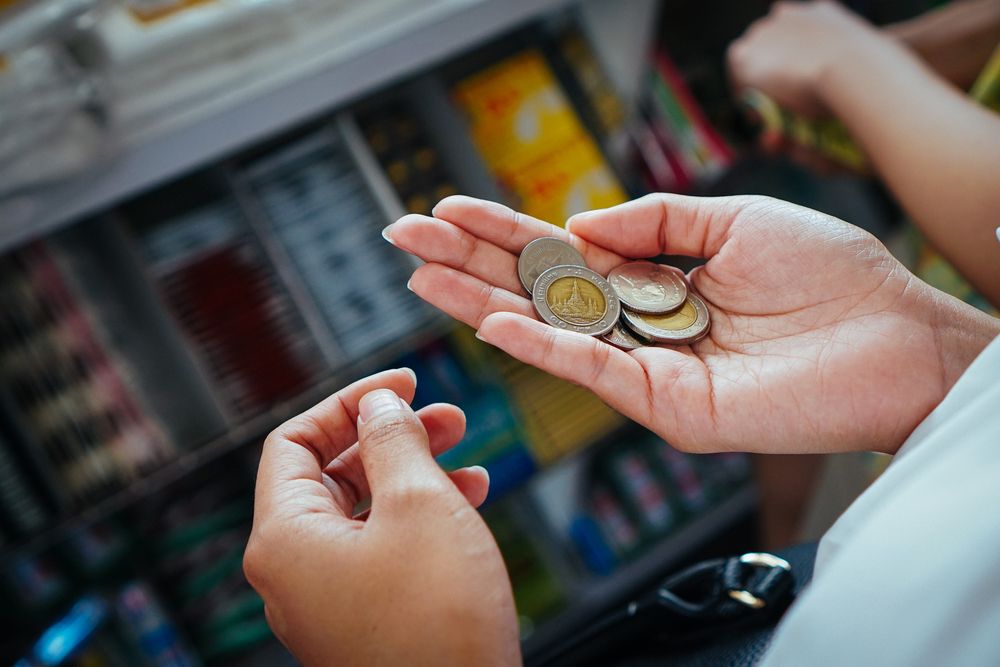We often overlook spare change as being insignificant, yet when added up over time, that pocket change can be transformed into substantial savings. Whether it’s loose coins in your car, small bills tucked away in your wallet, or the leftover change from your coffee purchase, there are plenty of ways to collect and turn spare change into a meaningful savings account. In this article, we’ll explore how to make the most of your spare change and harness it for future financial goals.
1. Use a Spare Change Jar
One of the simplest and most effective ways to collect spare change is by using a dedicated jar or container. Every time you get change from a purchase, drop it into the jar. Over time, you’ll be surprised at how much you can accumulate. This method works particularly well for loose change from daily transactions, such as coffee, bus fare, or small purchases.
-
Tip: Set a goal to fill your change jar for a specific purpose, like building an emergency fund or saving for a short-term goal. This can motivate you to consistently add to the jar.
-
Impact: It’s a straightforward way to save without even thinking about it, and it’s also a physical reminder to save your change.
2. Try a Round-Up Savings App
Round-up savings apps are designed to automatically round up your everyday purchases to the nearest dollar and save the difference. For example, if you buy a coffee for $2.75, the app will round it up to $3.00 and put the extra 25 cents into a savings account. Over time, these small round-ups can add up to serious savings, and you won’t even notice the difference in your daily spending.
-
Tip: Popular round-up apps like Acorns or Qapital allow you to automate the process and choose where you want your money to go. You can set the app to round up for specific goals, such as saving for a vacation or building an emergency fund.
-
Impact: This passive saving method allows you to save small amounts regularly without feeling the pinch, turning your spare change into a meaningful nest egg.
3. Set Up an Automatic Savings Plan
If you don’t want to rely solely on spare change but still want to save consistently, set up an automatic transfer from your checking account to a savings account. Even small, recurring amounts—such as $5 or $10 each week—can build up quickly over time. While not technically spare change, automating your savings ensures that money is being put away regularly without you having to think about it.
-
Tip: Link your savings plan to your paycheck or bank account so the money is transferred automatically every week or month. You can also schedule these transfers right after your pay day to make saving a priority.
-
Impact: Automatic transfers ensure that you save consistently without effort, helping you reach your savings goals faster and with minimal discipline.
4. Participate in a 52-Week Savings Challenge
The 52-week savings challenge is a fun and simple way to save money by contributing a small amount each week. The idea is to save a set amount each week, gradually increasing the amount as the weeks progress. For example, you might start by saving $1 in the first week, $2 in the second week, $3 in the third week, and so on until you reach $52 in the final week. By the end of the year, you will have saved $1,378.
-
Tip: If $1 to start seems too small, you can adjust the challenge to better suit your financial situation. The key is to gradually increase the amount to make saving more attainable.
-
Impact: The 52-week challenge is an excellent way to make savings feel more manageable, and by the end of the year, you’ll have a solid amount saved up without even thinking about it.

5. Turn Spare Change into Coins to Cash
If you’ve been saving spare change in a jar or container for a while, consider taking it to a coin-cashing machine. Many grocery stores and banks have self-service coin machines where you can exchange your spare change for paper bills or deposit it directly into your bank account. While some machines charge a fee, others, like Coinstar, offer free services when you opt for an e-gift card or donate to charity.
-
Tip: Regularly exchange your coins for cash or deposit them into your savings account. This will prevent your change from sitting around for too long and encourage you to continue adding to your savings.
-
Impact: Converting spare change into cash or savings allows you to use it for larger goals and ensures it doesn’t just accumulate as clutter in your home.
6. Use Cashback Programs and Rewards
Many credit cards, debit cards, and shopping apps offer cashback on purchases. Some programs give you a percentage of your purchase back, which can then be deposited directly into your savings account. This is a great way to turn small purchases into savings without any additional effort on your part. You can also accumulate points that can be redeemed for rewards, which could then be saved or used for other financial purposes.
-
Tip: Choose a cashback program that fits your spending habits. For example, some cards offer higher cashback for groceries, while others may offer better rates for travel purchases.
-
Impact: Cashback and reward programs allow you to passively save money on everyday purchases, turning even your small daily transactions into meaningful contributions to your savings goals.
7. Redirect Unused Subscriptions or Spending
Take a look at any subscriptions or memberships you no longer use or need, such as streaming services, gym memberships, or magazine subscriptions. Canceling or downgrading these services can free up small amounts of money that can be redirected into savings. This is a great way to “find” extra money that you didn’t realize was slipping away.
-
Tip: Review your subscriptions and recurring charges every few months. Consider switching to more affordable options or combining services where possible.
-
Impact: Redirecting funds that were previously spent on unused services can add up quickly and significantly increase your savings over time.
8. Cash-Back Apps for Everyday Shopping
Use cashback apps like Rakuten, Ibotta, or Honey when shopping online or in stores. These apps allow you to earn cashback or points on purchases, which you can then transfer to your savings account. This method helps you save money while buying things you would normally purchase, turning ordinary transactions into savings opportunities.
-
Tip: Look for store promotions or deals through these apps to maximize your savings on items you already plan to buy.
-
Impact: Cashback apps offer a great way to make your spending work for you by turning it into savings without requiring any additional effort.
Turning your spare change into serious savings doesn’t require drastic changes or sacrifices. Whether it’s by using a savings app, participating in a challenge, or simply collecting coins in a jar, the small steps you take today can lead to significant financial progress over time. The key is consistency—by regularly setting aside even a small amount of money, you’ll be surprised by how quickly it adds up. Start using these practical methods today, and watch your savings grow!


